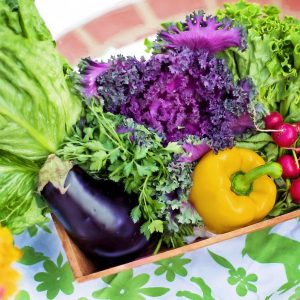Healthy eating makes a healthy body & mind
This course teaches you how to develop a well balanced diet. Topics covered include how cooking and food processing affect nutrition, recommended nutrient intakes, assessing nutritional needs, planning a balanced diet, timing of meals, needs for special people/groups.
COURSE STRUCTURE
This course is divided into eight lessons as follows:.
- Cooking And Its Effect On Nutrition
- Food Processing And Its Effect On Nutrition
- Recommended Daily Intake Of Nutrients
- Vitamins
- Minerals
- Planning A Balanced Diet
- Assessing Nutritional Status & Needs
- Timing Of Meals & Needs For Special Groups
WHAT YOU MAY DO IN THIS COURSE
Here are just some of the things you may be doing:
- Determine the reasons for cooking food.
- Compare different methods of cooking food in terms of their effect on both health and nutrition.
- Explain the effects on nutrition of cooking different types of foods, for different periods of time, including:
- Meat
- Fish
- Eggs
- Milk
- Plant Foods.
- Explain how meat can be ensured to be fit for human consumption in a raw state, such as in sushi and in smallgoods.
- Distinguish between function, effects, and chemistry of different types of food additives, in food preparation, including:
- Colours
- Preservatives
- Antioxidants
- Vegetable gums
- Flavourings
- Thickeners
- Anti caking agents
- Bleaches
- Emulsifiers
- Humectants
- Food acids
- Mineral salts.
- Evaluate taste and nutritional effects of adding different specified flavourings to five different specified food dishes, including:
- Salt
- Sugar
- Herbs
- Wines.
- Explain, givingexamples of specific foods, how “freshness” of different specified foods, impacts upon nutrient status of those foods.
- Explain how physical treatment of different specified foods (eg. cutting or crushing), may affect the food benefit of that food, including:
- digestibility
- keeping quality
- nutrient status.
- Explain different heat treatments for food preservation; in terms of the process, function and affects; including:
- drying
- canning
- bottling
- pasteurisation.
- Explain freezing of food, in terms of the process, function and affects.
- Define examples of each of the following types of food additives:
- Colours
- Preservatives
- Antioxidants
- Vegetable gums
- Flavourings
- Thickeners
- Anti caking agents
- Bleaches
- Emulsifiers
- Humectants
- Food acids
- Mineral salts.
- Distinguish between function, effects, and chemistry of different types of food additives, in food preservation, including:
- Colours
- Preservatives
- Antioxidants
- Vegetable gums
- Flavourings
- Thickeners
- Anti caking agents
- Bleaches
- Emulsifiers
- Humectants
- Food acids
- Mineral salts
- Analyse in a report, the effects of food additives found indifferent supermarket food items.
- Explain problems that may result from food additives including:
- allergic reactions
- hyperactivity in children.
- Explain different dehydration processes, in terms of the process, function and affects.
- Explain use of food processing techniques applied to different common foods with respect to food quality, storage life and cost.
- Compare the use of different food processing techniques on the same food, through in terms of the process, function and effect.
- Demonstrate five different food processing techniques, by independently preparing samples to a commercial standard.
- Compare recommended dietary intake information fromdifferent sources.
- Explain how food requirements vary, in terms of components and quality, at different ages, including:
- babies
- children
- teenagers
- young adults
- elderly people.
- Recommend daily food intake requirements for a variety ofdifferent people who you arefamiliar with (e.g. elderly, young children, active young adults), listing components of a typical daily intake together with a profile of the person.
- List quality food sources of C complex vitamins in order of richest to poorest source.
- List quality food sources of B complex vitamins in order of richest to poorest source.
- Explain nutrient disorders associated with three different significant vitamin imbalances, including vitamin B complex, vitamin C, and one other vitamin.
- Evaluatedifferent people you arefamiliar with, with respect to vitamin intake, lifestyle and health status, to determine if vitamin B & C needs are being satisfied.
- List food sources of calcium in order of richest to poorest source.
- List food sources of iron in order of richest to poorest source.
- Distinguish nutrient disorders associated with calcium and iron imbalances, in terms of diagnosis and significance.
- Evaluatedifferent people you arefamiliar with, with respect to mineral intake, lifestyle and health status, to determine if mineral requirements including calcium and iron needs, are being met.
- Develop a questionnaire to analyse the dietary requirements of a person.
- Analyse the diet, lifestyle and general health ofdifferent individuals and compare the individuals analysed.
- Recommend aspects of diet which could be improved for individuals analysed.
- Explain discrepancies detected between different sources of dietary recommendations.
- Conduct a self assessment of dietary practices, determining in a summary report, areas of deficiency





